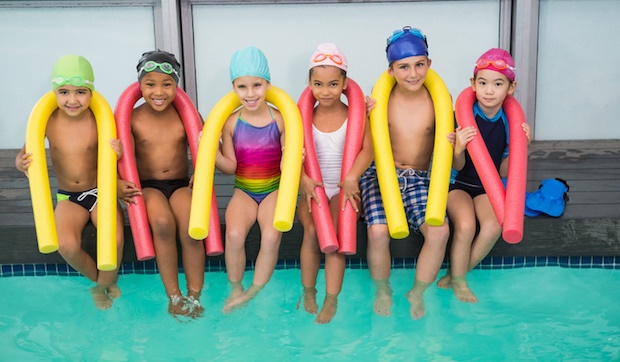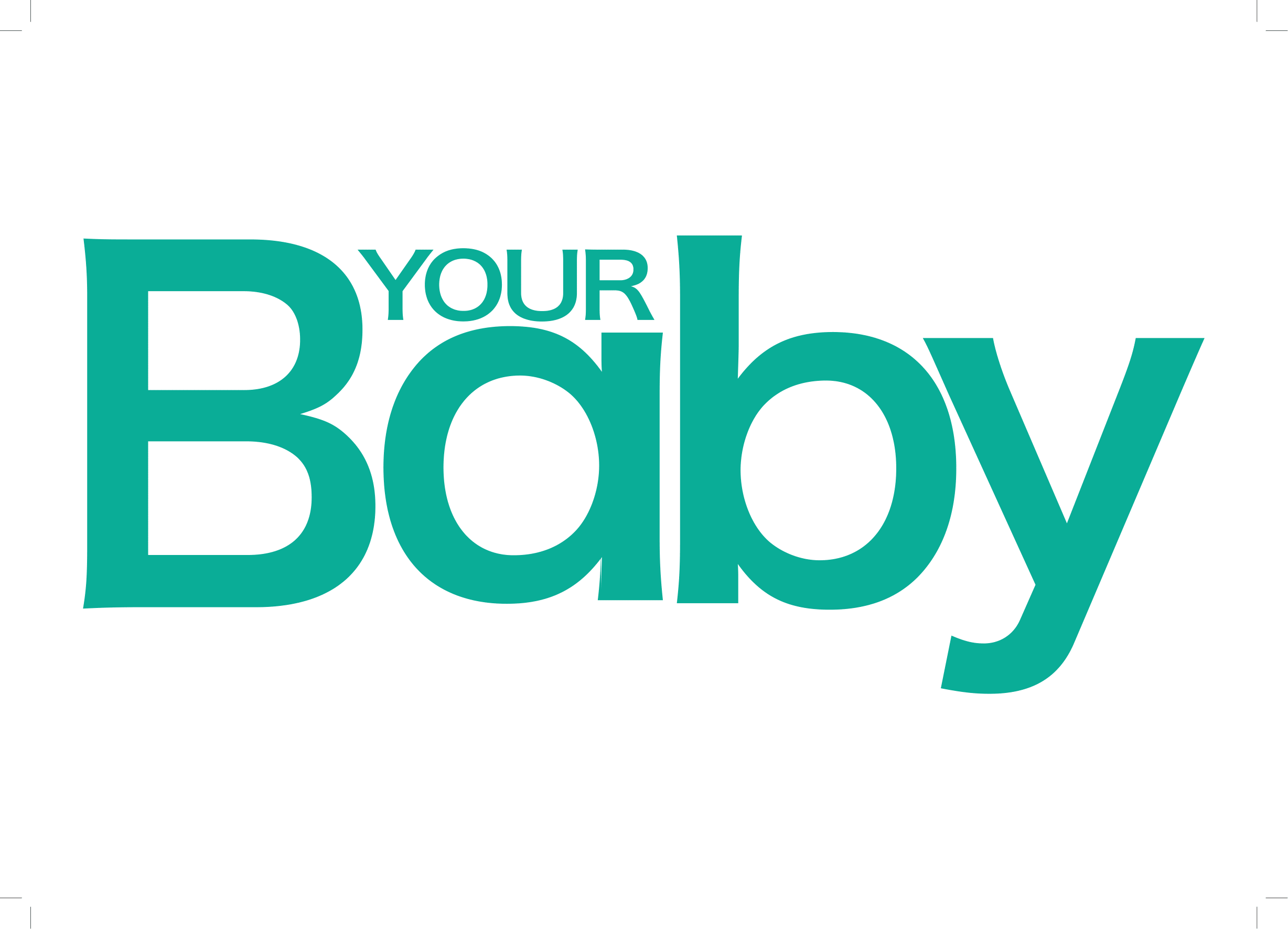
In a country blessed with a climate like ours, and awash with seas, rivers, dams and swimming pools, teaching our children how to swim is high on parents’ “must-do” list.
The need to make our children safe in water is the number one reason to propel us towards swimming lessons. It’s far more relaxing to keep a watchful eye on the kids from the comfort of your lounger, cooldrink in hand, when they are at least water-proficient. But what’s more, swimming is one of the best overall exercises, so your child gets a workout that’s sure to expend some of that boundless energy.
Getting your child into the swim of things is a process that can start as early as your child’s first bath – by ensuring that they are comfortable with getting their faces wet.
“Prior to the age of 3 or 4, the aim is really to get your child ‘acquatised’ which means getting her comfortable, buoyant and mobile in the water,” says Erich Harley, Aquatics lecturer in the Sport, Recreation and Exercise Sciences Department at the University of the Western Cape.
When to start swimming lessons
For the majority of children, the ability to learn the mechanics of how to swim is achievable from the age of between 3 or 4.
“Between the age of 3 or 4 is ideal to start lessons as the child has a better developed vocabulary, an ability to understand and their coordination level is sufficient,” confirms Abigail Williams, who runs the Learn to Swim and Junior Stroke Correction section of Perfect Stroke Swimming.
Swimming is also about independence, and at this age kids have separated enough from their caregivers to take the plunge. “You can’t expect a child to swim on her own when she can’t put her shoes on,” quips Williams.
Making water fun
Until the age of about 5, learning to swim should be all about play. Every swimming teacher has their own method to incorporate play, using adapted nursery rhymes, stories or picture words like “make a rocket ship”.
Making the activities fun ensures that the child is learning the basics of water and water safety without too much pressure. “This is a critical period for building up trust with the child. You want her to be happy coming to swimming lessons,” says Williams.
Different rates of progress
Every child is unique and will progress with learning to swim at a different rate. “Some children will self-discover water dynamics, like for example, ‘if I hold my fingers together I pull more water and move better’, and other children will require very specific instructions with repeated demonstrations, even with the teacher holding their arms or legs and taking them through the motions,” says Williams.
As a broad rule of thumb, most children will be ready for the formal introduction of stroke work from the age of 5.
Different teachers will start with different strokes depending on their personal preferences and experience. Most start with freestyle first, but some will choose to do backstroke.
BLABT... what?
A large majority of teachers use the BLABT principles of swimming to teach each stroke. BLABT stands for the order in which a stroke is taught: Body position first, then Legs, then Arms, then Breathing and finally Timing. “Once the child can swim one stroke, she should then move on to the next stroke,” advises Lois Basset, who has been teaching swimming at Bassett Swim School for more than 40 years.
If your child isn't making enough progress
If your child is not showing any progress in a three month period, there may be other factors at work. “It could be a mismatch between the child and the teacher, but it could also point to problems with muscle tone and or proprioception,” says Williams, who has a BSc Honours in Sport Science.
Proprioception
Proprioception is an awareness of where your body is in space. If a child has underdeveloped proprioception they will struggle to know without looking where their arm is in relation to their ear, for example. Swimming relies on a good level of proprioception, and intervention from a specialist such as an occupational therapist may unlock the child’s swimming potential.
How to assist in making swimming easier for your child
By the age of 7, a child should have attained relative proficiency in at least three of the four strokes. Some teachers leave the teaching of butterfly to later because if it is learnt incorrectly it is very hard to undo an incorrect rhythm.
You as a parent can assist in making things go swimmingly by understanding that each child will learn at her own pace, providing support, praising endeavour and making sure that your child attends lessons regularly. Backed by your enthusiasm, the child should be ready between the ages of 7 and 9 to refine her strokes through stroke correction according to her individual problem areas.
Rather let the teacher help with stroke correction
As a poolside parent the potential to leap in with advice on stroke correction is tempting. But if you are not swim trained or a swimmer yourself, the experts warn against it. “When you look at a stroke it is easy to see what is wrong,” points out Williams, “but knowing how to correct it is far more difficult.” William gives an example:
If you can see that your child’s bottom is swinging while she swims freestyle, the parent will often jump in with an instruction to “keep your bottom straight”. But the real problem is more complex: it could be that the child is pulling too hard on one side or crossing over when she pulls. “Pointing out the problem without elaborating on the cause of the problem just frustrates the child,” says Williams.
Swimming lesson FAQ
Selecting the correct swimming lessons for your child is another way to minimise the potential frustration of learning to swim. If you have the time and enjoy water yourself, acclimatising your child to water in the ‘acquatising’ stage with the aid of armbands and pool noodles could be a very bonding experience.
However, Harley, who cites the war on drowning as his passion and is the operator of an accredited Learn to Swim centre at the University of the Western Cape for previously disadvantaged children, recommends that parents should consider at least one package of swimming lessons to assist with proficiency.
Costs
Costs can vary tremendously from R25 for a 15-minute lesson to R170 for a 30-minute lesson. Many swim schools offer a package deal of a set rate for 10 or 12 lessons, but if you miss a lesson you might not be able to make it up and you will lose your money for that lesson. The lessons need to fit your budget, but there are other key factors that are worth taking into consideration in making your choice.
The importance of environment
The environment is key. The temperature of the pool should be really warm, 30º so that your child does not get cold and miserable. You need to choose between an open-air pool or an enclosed pool. An open-air pool is lovely in summer but an enclosed pool will mean fewer cancelled lessons due to inclement weather, as well as the potential to carry on through winter.
Facilities available
There also needs to be easily accessible toilet and bathroom facilities, a comfortable waiting area and secure parking.
Duration of lessons and class size
The duration of the lessons for kids under 5 should not be longer than 20 minutes in the water, as the child loses concentration after this. Class size is also an important consideration. One-on-one lessons are available at a cost, but the group lessons also have value provided there are never more than five or six children per instructor.
Group lessons
In a group, children will often try to do what their peers are doing and extend themselves further than they might have in a one-on-one situation. Word-of-mouth referrals are a good way to hone down your list of swim school options, but it is worthwhile watching a lesson before making your final decision.
Whichever option you decide on, remember that learning to swim is a huge achievement for your child, as she gets her uncoordinated limbs to work together in ever more synchronised ways. Some may take swimming all the way into the competitive arena, for others it may be the springboard into a variety of other water-related sport such as canoeing, surfing, sailing or diving, whilst many others may be quite content with being able to swim around with their friends in a game of Marco Polo.
At whatever level your child chooses to take it, learning to swim ensures that she enjoys the confidence and safety that comes from competence in the water.
Resources:
Swim SA: www.swimsa.org
Tel: 011 404 2480




 Publications
Publications
 Partners
Partners










